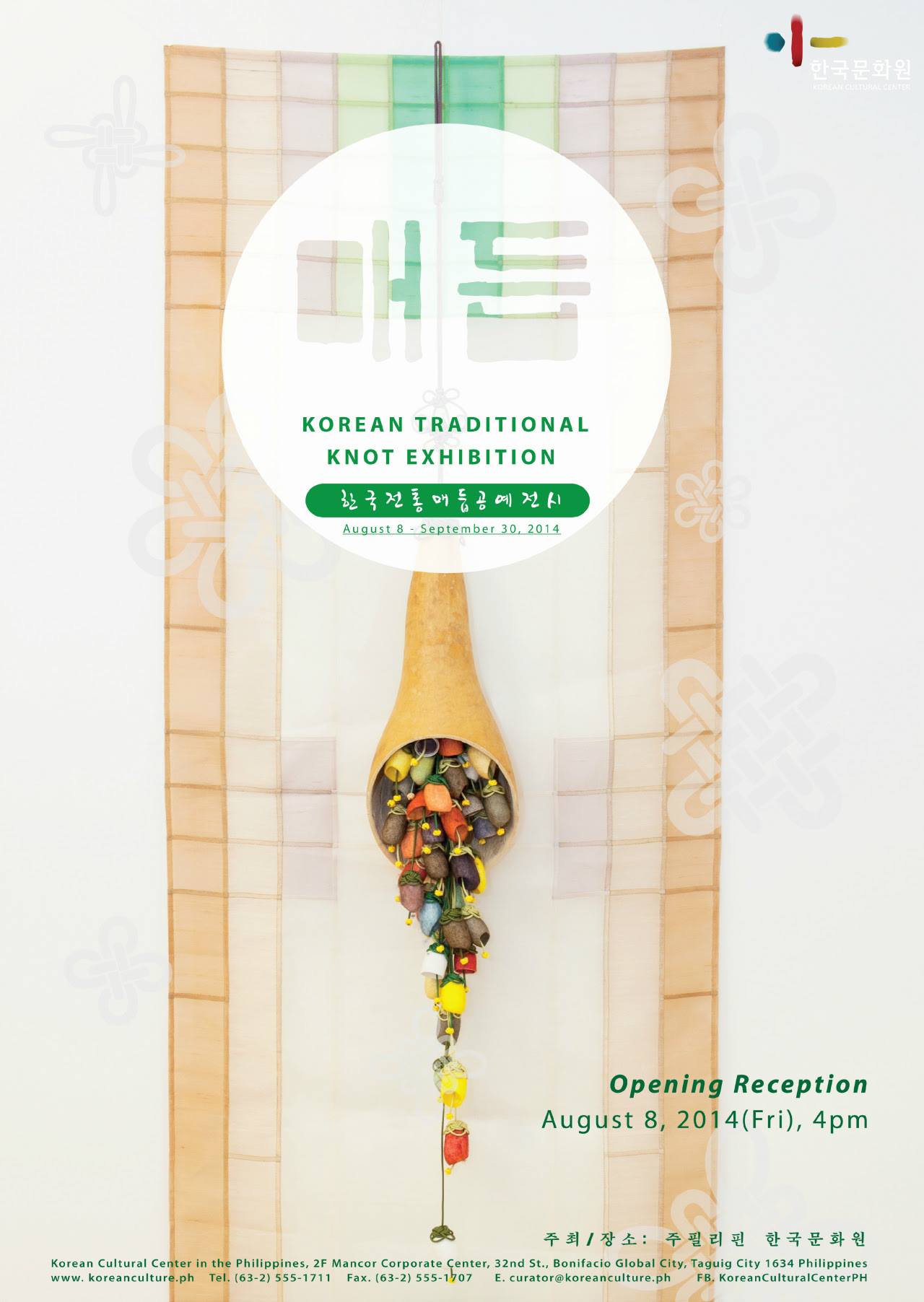Korean Traditional Knot Exhibition

The first traces of Korean knot or maedup date back to the time of “three kingdoms” (first century BC to VIIth century). This tradition, typically Korean, is inherited from the ancient China and refers to the culture of thread, linked to a certain philosophy of life of Korean people. Pictorial representations show the use of cords knotted to clothing and ceremonial objects. First they were a symbol of royal authority. Then nodes extended to all social classes of Korean society for the decoration of garments and objects of every day (purses, fans, musical instruments…) or interior decoration. The maedup also found its place in religion through Buddhist ornaments. Still today, nodes decorate traditional garments and Koreans offer them as lucky charms.
As in olden times, the maedup is only done with fingers. Different knots – we count about 40 patterns – for most of them, have names evoking the nature and daily life: lotus, ginger, butterfly, ring, glasses, dragonfly, strawberry, chrysanthemum, plum, chick…
